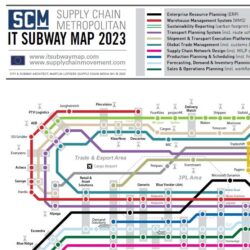GPT-4 is set to radically change supply chain network design

The advent of ChatGPT will radically change the nature of supply chain professionals’ work. That became evident during Supply Chain Media’s webinar in collaboration with AIMMS, during which the supply chain network design specialist showed how artificial intelligence can be used to identify disruptions and analyse their impact. Zoë Kokje Schouten of AIMMS: “We can now model and analyse scenarios within minutes. Without artificial intelligence, it would take days or even weeks.”
By Marcel te Lindert
During the webinar, AIMMS demonstrated how combining artificial intelligence (AI) with supply chain network design opens up new possibilities. Firstly, the tool developed by AIMMS has to be fed with data about the company and its operating network, including an overview of the production and distribution locations, the suppliers, the product portfolio and – if desired – the most important competitors. “The tool then searches the internet for information about potentially interesting developments. Users can alter the notification settings themselves based on their relevance,” said Zoë Kokje Schouten, Business Director of Supply Chain Solutions at AIMMS. This was illustrated based on the example of a fictitious petrochemical company.
ChatGPT in action
The notifications can include local news reports about disruptions or information from other public data sources. “Then ChatGPT springs into action. It explains the potential impact of the disruption on the network in easy-to-understand language,” continued Kokje Schouten. “If the disruption is relevant, our proprietary supply chain network design tool sets to work. On the screen, the user sees which locations are directly and indirectly affected by the disruption. The bigger the dots on the map are, the greater the impact.”
Furthermore, the AI tool suggests scenarios that can be analysed as the basis for adapting the network and minimizing the negative impact. The user can modify those scenarios if desired, and then the tool starts work on the calculations. “In effect, the user enters into a dialogue with the AI tool,” stated Kokje Schouten. “Then the scenarios can be compared to see how adapting the network will affect the costs.”
Prototype
Zoltan Lelkes, founder of the Hungarian AIMMS partner Optasoft, was closely involved in the development of the AI tool. “We used GPT-4 (The new language model behind ChatGPT, which makes the chatbot even smarter, Ed.) to collect data from various sources and determine its relevance. GPT-4 can also indicate the potential impact on the company’s network. But GPT-4 alone is not enough. By adding network knowledge into the mix, we can predict and visualize how the network will behave… and show how robust the network is,” Lelkes explained.
The AI tool, called Sensai, is still a prototype for now, but AIMMS will continue working on it in the coming months to develop it into an effective product. “As our example shows, we can model and analyse scenarios in a matter of minutes. Without artificial intelligence, that would take days or even weeks,” said Kokje Schouten. “By adding artificial intelligence, we can turn a reactive supply chain network design tool into a proactive assistant that tells you how you can make your supply chain resilient.”
Saving huge amounts of money
AB InBev is one of the companies already using the AIMMS tools. Supply Chain Director Akhil Srivastava shared his enthusiasm about the integration of artificial intelligence: “It’s a big advantage to receive timely alerts to disruptions, understand their impact and immediately see what action you need to take. The ability to respond to real-time information so quickly can save you huge amounts of money, protect your reputation and improve the customer experience. This all helps us to make our supply chains agile and resilient.”
The AIMMS innovation has been well received by other customers too, reported Kokje Schouten. “Often, the notifications alone are very interesting to them. One supply chain manager wanted to share the notifications with his sales team because they reveal emerging market opportunities. So this tool isn’t just interesting for the supply chain department, but also for the whole company.”









